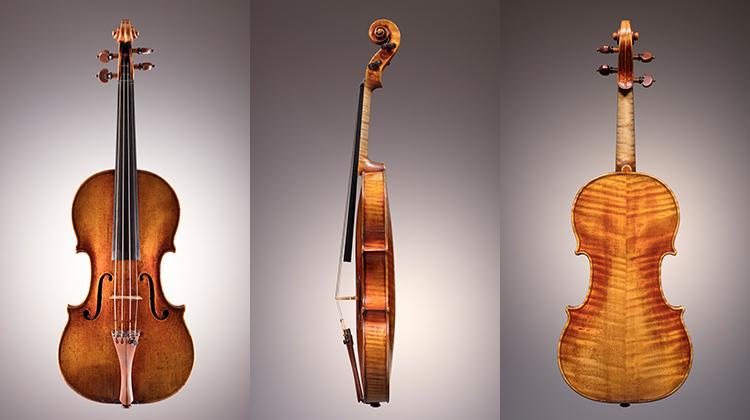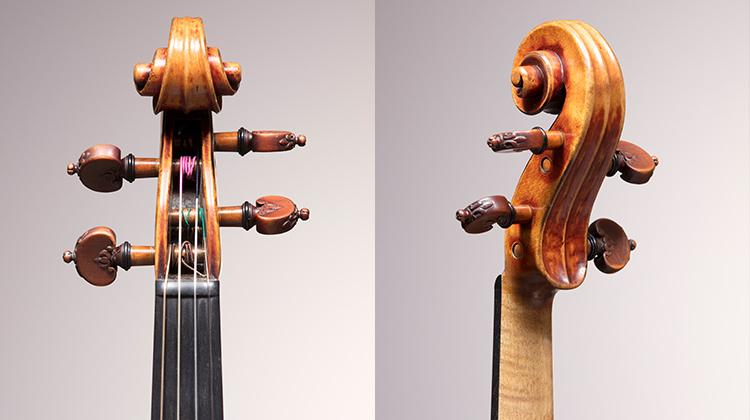The striking appearance and the rich varnish on the back of the violin was likened to the brilliant and changing colors of the graceful dolphin. It was named by George Hart, a violin dealer in London, who owned the violin in the late 1860’s. Since then, the violin has been called by the name of “Dolphin”. This violin was purchased by the well-known amateur player Mr. C. G. Meier in 1862 from Parisian dealer Jean-Baptiste Vuillame. In 1868, he sold the violin to George Hart. In 1875, it was sold to a well-known collector Mr. John Adam, who, among his other collections, in 1881-1882, disposed of it to David Laurie, the foremost international dealer of the day. In 1882, the violin was sold to Mr. Richard Bennett of Bolton, a collector as well as an amateur. In 1892, W. E. Hill & Sons acquired the violin from Mr. Bennett and then sold it to Mr. Lionel Walker Munro, bought it back from him, and then sold it to an excellent amateur player Mrs. A. N. Stothert, who retained it until 1915. In 1915, W. E. Hill & Sons re-purchased the violin and it returned to its previous owner, Mr. Richard Bennett. He disposed of his collection including “Dolphin” in 1926, and in 1935 it passed into the hands of Mr. George Kemp, Director of the well-known firm of biscuit manufacturers of the same name. In 1950, it passed into the hands of the violin virtuoso Jascha Heifetz (1901-1987). After Heifetz, the violin was kept in Mr. Henry Hottinger’s collection. Since 1970, the violin had been carefully kept by Mr. Cho-Ming Sin, a Hong Konger residing in England. Sasakawa Music Foundation acquired the instrument in February 2000.
![]()

